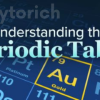-
×
 Spring Cloud Gateway Resilience and Security by Thomas Vitale
1 × $5.00
Spring Cloud Gateway Resilience and Security by Thomas Vitale
1 × $5.00 -
×
 Pait Pro With paitpro
1 × $54.00
Pait Pro With paitpro
1 × $54.00 -
×
 Fantasy Software Add-On by John Truby
1 × $23.00
Fantasy Software Add-On by John Truby
1 × $23.00 -
×
 AI Interiors For Fine Art Photography and Mockups by Hugo Ceneviva
1 × $8.00
AI Interiors For Fine Art Photography and Mockups by Hugo Ceneviva
1 × $8.00 -
×
 Portraiture Pro Lens FX Flare Overlays by PRO EDU
1 × $8.00
Portraiture Pro Lens FX Flare Overlays by PRO EDU
1 × $8.00 -
×
 The Outcast Masterclass Event With Elisa Canali
1 × $23.00
The Outcast Masterclass Event With Elisa Canali
1 × $23.00 -
×
 Understand Attraction by Adam Lyons
1 × $5.00
Understand Attraction by Adam Lyons
1 × $5.00 -
×
 MovNat Mobility With Danny Clark MovNat
1 × $39.00
MovNat Mobility With Danny Clark MovNat
1 × $39.00 -
×
 Greek 101: Learning an Ancient Language By Hans-Friedrich Mueller
1 × $5.00
Greek 101: Learning an Ancient Language By Hans-Friedrich Mueller
1 × $5.00 -
×
 Creating Your Hearts Desire 2023 With Sonia Choquette
1 × $23.00
Creating Your Hearts Desire 2023 With Sonia Choquette
1 × $23.00 -
×
 Human Design Coaching Cue Cards With Becca Francis
1 × $15.00
Human Design Coaching Cue Cards With Becca Francis
1 × $15.00 -
×
 Floor and Whisp Smoke FX Overlays by PRO EDU
1 × $8.00
Floor and Whisp Smoke FX Overlays by PRO EDU
1 × $8.00 -
×
 Action and Explosive Debris FX Photoshop Overlays by PRO EDU
1 × $8.00
Action and Explosive Debris FX Photoshop Overlays by PRO EDU
1 × $8.00
Understanding the Periodic Table By Ron Davis Jr
$239.00 $5.00
Understanding the Periodic Table By Ron Davis Jr – Immediate Download!
Content Proof:

Understanding the Periodic Table by Ron Davis Jr.
The periodic table of elements is more than just a chart; it is a window into the universe of chemistry. As one gazes upon the orderly array of symbols and numbers, it reveals the secrets of the natural world, connecting atoms to their properties and behaviors. In “Understanding the Periodic Table,” Ron Davis Jr. takes readers on a journey through this essential tool, seamlessly blending fundamental concepts with rich historical context. This book serves not only to inform but also to ignite curiosity, drawing connections between complex scientific ideas and everyday life. Through engaging explanations and practical applications, Davis offers a thorough exploration of the periodic table that appeals to both novices and seasoned chemists alike.
Structure of the Periodic Table
In the vast expanse of chemistry, the periodic table stands as a monumental achievement. It’s structured in a way that echoes the natural order of the elements themselves. Elements in the table are arranged by atomic number, which is essentially the number of protons in an atom’s nucleus. As you navigate through the table, you notice that it weaves together elements into periods (horizontal rows) and groups (vertical columns), which signify shared properties.

The Layout’s Significance
The layout is not arbitrary; it is thoughtfully designed to reflect the periodic trends that chemists observe. For example, moving from left to right across a period, you’ll find a gradual increase in electronegativity and ionization energy properties crucial to understanding chemical bonding. Conversely, as you descend through a group, atomic radii typically increase due to the addition of electron shells. Davis emphasizes how these trends can provide predictive power, akin to reading the gentle ripples of a pond to anticipate a storm.
Groups and Their Properties
- Alkali Metals:
- Highly reactive.
- Soft and can be cut with a knife.
- Exhibit low melting points.
- Noble Gases:
- Inert and non-reactive.
- Exist as individual atoms rather than molecules.
- Have full outer electron shells, making them stable.
By understanding these groups, one appreciates the relationships between the elements and their chemical behaviors. Davis’s book effectively illustrates these correlations, serving as a map to help learners navigate through the complex interplay of elemental properties.
Element Properties
In “Understanding the Periodic Table,” Ron Davis Jr. delves deeper into the inherent characteristics of various elements, demonstrating how their placement within the table influences their chemical behavior. Each group on the table unveils a series of common traits, intricately tied to the underlying laws of chemistry.
Understanding Reactivity
The reactivity of elements can often be predicted based on their group. For instance, alkali metals like lithium and sodium are known for their vigorous reactions with water, producing hydrogen gas and hydroxides. Emphasizing this concept, Davis compares their behavior to excited children at a birthday party eager to engage in play but capable of causing chaos if not monitored.
When considering halogens, such as chlorine and fluorine, their reactivity stems from their pursuit of a complete outer shell of electrons. This quest for stability leads them to readily bond with metals, often resulting in the formation of salts. These narratives not only make chemistry relatable but also underscore the beauty and precision inherent in the scientific study of elements.
Properties Across the Table
- Metals: Good conductors of electricity, malleable, and ductile.
- Non-metals: Poor conductors, brittle in solid form, and can vary in states (solid, liquid, gas).
- Metalloids: Display intermediate properties, often used in semiconductors.
Davis uses vivid descriptions and metaphors to clarify these concepts, making the intricate details of the periodic table accessible and engaging for all readers.
Historical Context
Understanding the periodic table is incomplete without appreciating the historical journey that led to its creation. The tale is as rich as the elements themselves, marked by the contributions of remarkable scientists like Dmitri Mendeleev, who first published an early version of the table in 1869.
The Evolution of the Periodic Table
Mendeleev’s arrangement was not purely based on atomic weights but also on the properties of the elements, which allowed him to predict the existence of undiscovered elements. This is akin to an artist foreseeing the final strokes of a masterpiece before the canvas is filled. Davis highlights Mendeleev’s foresight and creativity in shaping our understanding of chemistry.
Following Mendeleev, more discoveries were made that prompted adjustments to the table’s structure, including the discovery of noble gases and the development of the modern periodic law. As new elements were synthesized, the periodic table evolved, resembling a living organism capable of growth and adaptation.
Impact of Historical Developments
The periodic table also reflects broader scientific methodologies and shifts in thought. The quantum theory, introduced in the early 20th century, transformed our understanding of electron arrangements and energy levels. This dramatic shift emphasizes the dynamic nature of science, akin to a river carving new paths through ancient rocks.
By exploring this historical context, Davis allows readers to appreciate the periodic table not as a static chart but as a timeline of scientific achievement, a chronicle of humanity’s quest for understanding.
Applications of the Periodic Table
Beyond its academic significance, the periodic table plays an indispensable role in various industries and everyday life. Ron Davis Jr. illuminates how the theoretical knowledge gleaned from the table translates seamlessly into practical applications across multiple domains.
Everyday Chemistry and Industry
In fields such as medicine, agriculture, and materials science, the properties of elements guide innovation. For instance, the understanding of carbon has led to advancements in organic chemistry, paving the way for pharmaceuticals and petrochemicals. Similarly, knowing the properties of metals like copper or aluminum informs their use in electrical wiring and construction, harnessing the principles laid out in the periodic table.
Further Applications
- Materials Science: Development of superconductors and nanomaterials.
- Environmental Science: Understanding element cycles like the nitrogen cycle.
- Forensic Science: Identifying substances and determining their origin.
The applications of the periodic table extend far beyond mere academic curiosities; they shape our daily encounters and future technologies. By instilling an appreciation for these links, Davis reinforces the relevance of his work to society at large.
Learning Tools
Davis recognizes that mastering the periodic table can be a challenging endeavor, especially for students. Therefore, “Understanding the Periodic Table” also includes a wealth of learning tools specifically designed to cater to diverse educational styles.
Educational Strategies
- Mnemonic Devices: Creative phrases or acronyms to remember element groups.
- Visual Aids: Color-coded charts that highlight trends in reactivity and properties.
- Interactive Apps: Technology that allows users to engage with the table dynamically.
Tips for Retention
- Flashcards: Helpful in memorizing key properties and element symbols.
- Practice Quizzes: Reinforces knowledge through active recall.
- Group Study Sessions: Facilitates discussions and enhances understanding through collaboration.
These tools not only promote engagement but also reinforce the structures and principles encapsulated within the periodic table, making it less of a daunting task and more of an exciting challenge.
Conclusion
“Understanding the Periodic Table” by Ron Davis Jr. emerges as an invaluable resource for anyone who wishes to delve into the realm of chemistry. With its rich exploration of the table’s structure, properties of elements, historical context, practical applications, and innovative learning tools, the book captivates readers. Through a tapestry of ideas woven with creativity and precision, Davis not only demystifies the periodic table but also celebrates it as a vibrant tool of scientific inquiry. Whether you are a student, educator, or simply a curious mind, this book rests as an open door to understanding the elemental building blocks of our universe.
Frequently Asked Questions:
Business Model Innovation: We use a group buying approach that enables users to split expenses and get discounted access to well-liked courses. Despite worries regarding distribution strategies from content creators, this strategy helps people with low incomes.
Legal Aspects: There are many intricate questions around the legality of our actions. There are no explicit resale restrictions mentioned at the time of purchase, even though we do not have the course developers’ express consent to redistribute their content. This uncertainty gives us the chance to offer reasonably priced instructional materials.
Quality Control: We make certain that every course resource we buy is the exact same as what the authors themselves provide. It’s crucial to realize, nevertheless, that we are not authorized suppliers. Therefore, our products do not consist of:
– Live coaching calls or sessions with the course author.
– Access to exclusive author-controlled groups or portals.
– Membership in private forums.
– Direct email support from the author or their team.
We aim to reduce the cost barrier in education by offering these courses independently, without the premium services available through official channels. We appreciate your understanding of our unique approach.
Be the first to review “Understanding the Periodic Table By Ron Davis Jr” Cancel reply
You must be logged in to post a review.
Related products
Science












Reviews
There are no reviews yet.